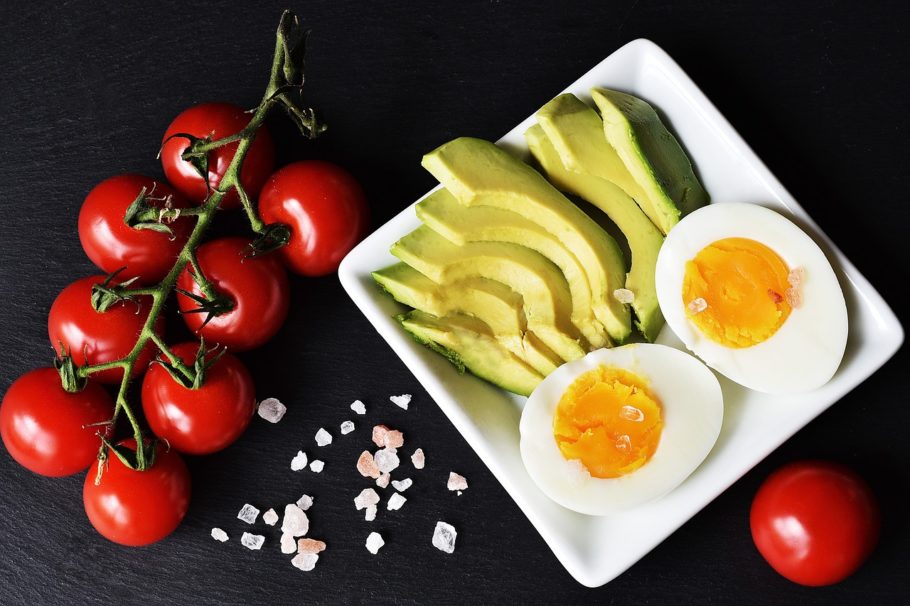Using the Keto Diet for Weight Loss: The Definitive Guide (2019)
This is the most comprehensive guide of getting the very most out of the keto diet for weight loss.
In this guide you’ll get access to over 7 chapters of tips and techniques you can use while on the keto diet to lose weight more effectively.
The best part? There may be some things you never knew about the keto diet and weight loss in general that you will be able to use for long term success.
What You Should Know About the Keto Diet and Weight Loss Before Reading
The Ketogenic diet (keto diet) involves reducing your carbohydrate intake significantly and replacing those macros with fat, making it a low-carb, high-fat diet. This considerable reduction in carbs puts your body in a metabolic state called ketosis, which results in your body relying on fat for energy.
Because of this reliance on fat as a fuel source, the keto diet has taken the diet and health world by storm as an efficient and healthy way to lose weight. While there has been some controversy and mixed feelings about the keto diet, multiple studies have shown it to be beneficial for overall health and weight loss.
The keto diet, while efficient and beneficial to health, has its downsides and challenges. It has been known to be difficult to stick to and easy to cheat and slack on. Considering the diet is more lenient and leaves certain decisions for yourself to make, people don’t always get the weight loss results they want. In the diet, there is no specific restriction in calories, any foods are allowed as long as it fits the macros planned, and exercising is not enforced. So you can see how easy slacking off can be on the keto diet and that making good decisions is essential when wanting to see results.
This guide can help people on the keto diet that either find themselves struggling to see weight loss results or someone who is new to the diet and wants to avoid these mistakes beforehand.
1. How Being Strict With Your Carb Intake Can Get You Farther
The problem:
The Keto diets main factor is its low carb nature and replacing those macros with fat. Being strict and consistent with your carb intake is very important when it comes to seeing weight loss results. This is because your cells use glucose and sugar, which are from carbohydrates, as its primary source of energy.
Although most of the cells in your body can use other sources as fuel such as fat and protein, which shows that carbs are not needed in excess… or at all.
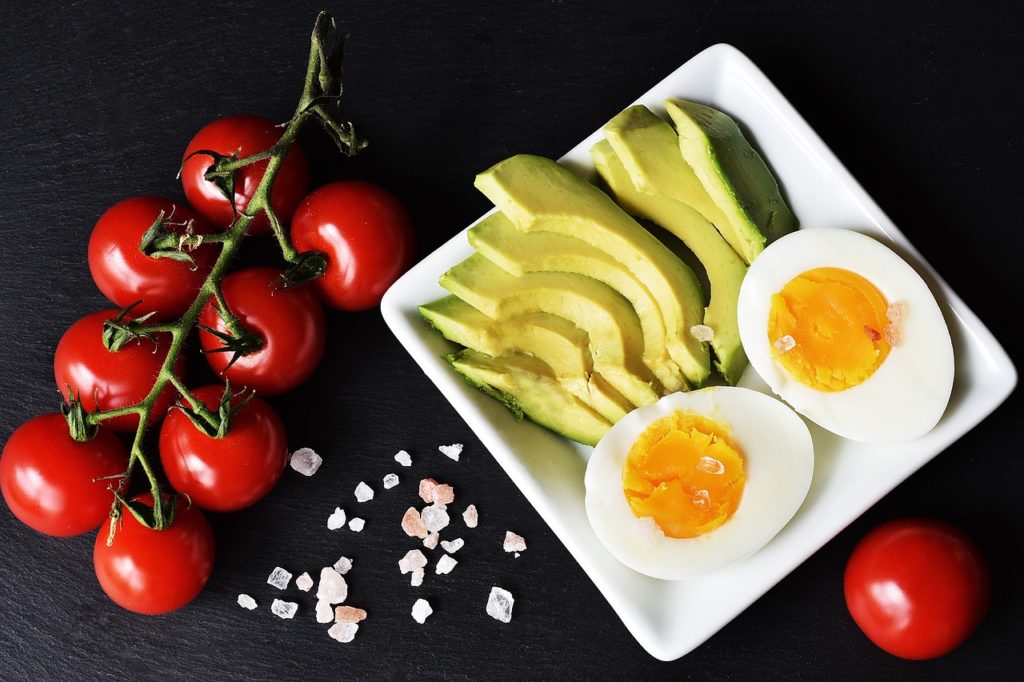
So, Putting your body in ketosis, whether through the diet or through ketogenic pills, forces it to use the fat and protein you are consuming as its primary source of energy, which helps you lose fat more effectively. The main problem here is not the keto diet itself, but people not being aware of how many carbs they’re eating and how to avoid making that mistake.
The Solution:
You may be eating carbs without realizing it. A lot of carbs are hidden in unexpecting foods such as dairy, nuts, and starchy vegetables such as corn and peas. While these foods are all approved by the keto diet, this gives us an example of why you should not take advantage of the leniency of the diet.
- If your carb intake isn’t low enough, performing the diet is useless. The level of carb restriction is different for each person, so it is good to know what amount you should be limited to. If you aren’t limiting your carb intake below a certain amount, it is not possible to reach ketosis, which is the main factor for weight loss in the keto diet.
- So keep your carbs within the limit. Filling up on low carb vegetables such as asparagus and zucchini and focusing on high-fat proteins is essential to feeling fuller and more satisfied. You can also save your carb intake for later in the day, so your blood glucose levels don’t spike.
2. How To Stay On The Healthy, Nutritious Side of The Keto Diet
The Problem:
No matter what diet you are on, you should always eat healthy, nutritious foods. While this may seem like a no brainer, there are many people who stick to their diets restrictions but choose all the unhealthy options and cut corners.
Many people might think that just because they are restricting their calories from reducing carb intake is equal to being healthy just because they are losing weight.
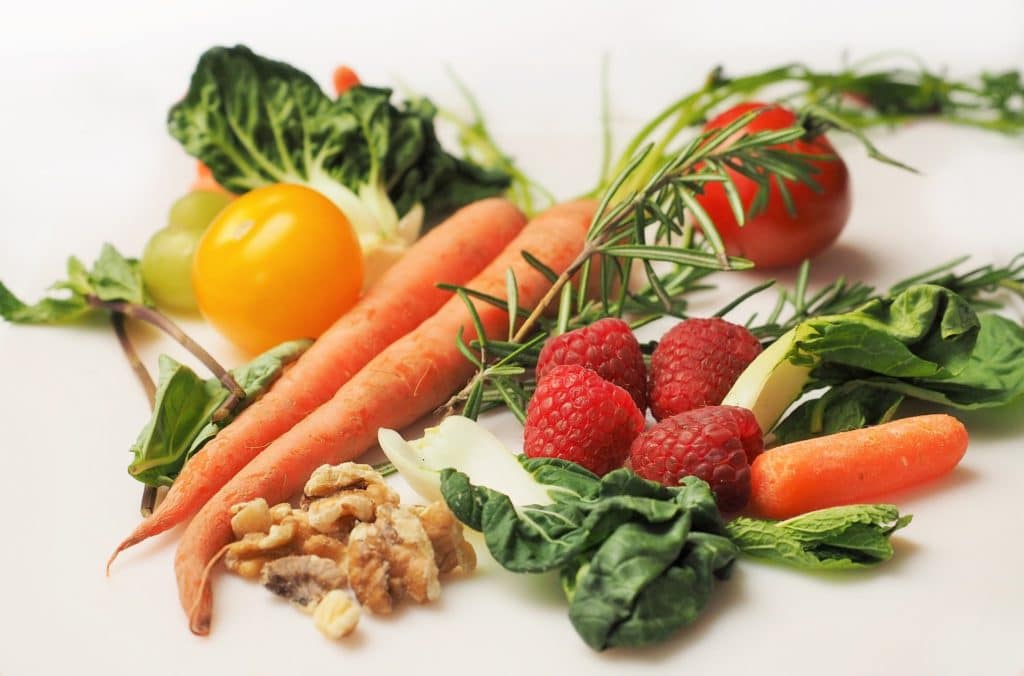
Even more concerning, a lot of people don’t know what foods are considered healthy, and the keto diet isn’t strict on incorporating healthy foods in your meals. That’s why while there are natural and organic solutions, a lot of people have started turning to keto meal replacement alternatives.
The Solution:
- Stop eating convenience-type foods. Foods like hotdogs, fatty burgers, and fast food meals may be apart of your macros and keto-friendly but aren’t nutritious foods. They are nutrient-poor and empty calories, which causes them to be low in the vitamins and antioxidants we need.
- Stick to unprocessed, whole foods. To be safe and to stick to your weight-loss mission, opt towards eggs, fish, poultry, and avocado, which are all good options filled with nutrients. Also adding in non-starchy vegetables with every meal will help you feel fuller and more satisfied.
- Learn how to cook healthy meals for the long term. The keto diet doesn’t teach you how to cook healthy foods for yourself, but there are extensive amounts of step by step keto recipes online to go by. When it comes to dieting, the main concern is always when the diet is over, and you have to resort back to regular eating habits and to incorporate certain foods again. Having that knowledge of cooking healthy foods and learning new tips on how to make things nutritious while still tasting delicious is very important to long term success.
3. How To Get More From The Keto Diet By Tracking Your Calories
The Problem:
When it comes to weight loss, it’s vital to restrict your calories to create a calorie deficit. This can be achieved by reducing the number of calories you consume, although this needs to be done safely according to your own body and personal needs.
The keto diet does not explicitly say to count calories because it is not always required. Although when it comes to significant weight loss, learning how to track your calories the right way is necessary to stay on course, so we don’t overeat.
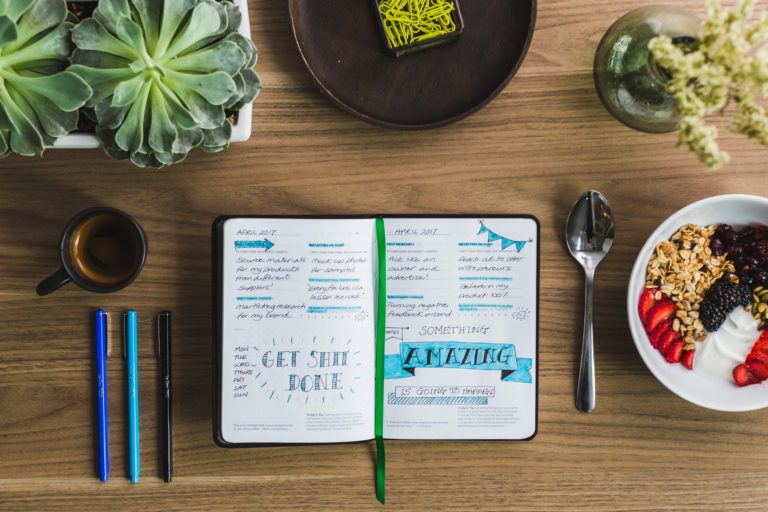
The solution:
- Eating Keto-friendly foods that aren’t high in calories. A lot of the foods in the keto diet are very healthy, but can also be high in calories such as nuts and avocado. They are usually very filling and satisfying, but it is possible to overeat by mindless eating and snacking throughout the day. Instead, you can op for some non-starchy vegetables, lean meats, and fish instead of always going for the full-fat foods when snacking.
- Track your calories and macros. While it is not always easy or appropriate to track every meal and snack that you consume daily, it is essential to do so whenever you can. A great calorie and macro tracker to use is MyFitnessPal (app & website), and you can customize it to your specific keto diet needs. When you start tracking calories this way, you will begin to see better results and learn to be more aware of what you’re eating in the future.
- Pay attention to portion sizes and your body. Be aware of portion sizes when you cant track your foods and to what is the healthy option. Also, listen to your body for when you are feeling full or if you are even hungry in the first place. A couple of tips to always remember is to drink water while you eat and stick to having five colors on your plate.
4. How to Prepare For The "Keto Flu"
The Problem:
First of all, what is the “keto flu”?
Well, when you are going from a diet that doesn’t limit your carbs to a diet like keto, your body will go through a lot of changes. Unfortunately, most of these changes will be negative at first, and you won’t find yourself feeling too good. This can be a problem when trying to stick to and lose weight with the keto diet since it is hard enough to start in the first place.
The symptoms. These symptoms listed below are enough to convince people that the keto diet isn’t for them, and they give up. But there are ways to make the process more bearable and the symptoms at bay.

- Nausea
- Brain fog
- Fatigue
- Cramping
- Insomnia
- Muscle aches
The solution:
- Clearing up symptoms. A lot of these symptoms can be cleared up by drinking lots of water and eating mineral-rich food to replenish the minerals we lost. You can also take mineral supplements if needed and make sure not to overexert yourself with physical activity during this time. Staying rested and getting adequate amounts of sleep during the first week of the diet and having these symptoms is recommended.
- Staying motivated. Keeping a healthy mindset and not giving yourself a choice to give up is critical. Realizing that your body is changing and doing more research to help understand the science behind it can help a lot as well. By riding through the symptoms until you start feeling the positive benefits of the diet, you will thank your past self for it later.
5. How You Will Benefit From Using A Meal Plan
The problem:
When first starting the keto diet, it can all feel very overwhelming, and you might not know where to start.
Following a meal plan may be the best fit when it comes to staying on track and making sure you don’t resort back to your old eating habits.
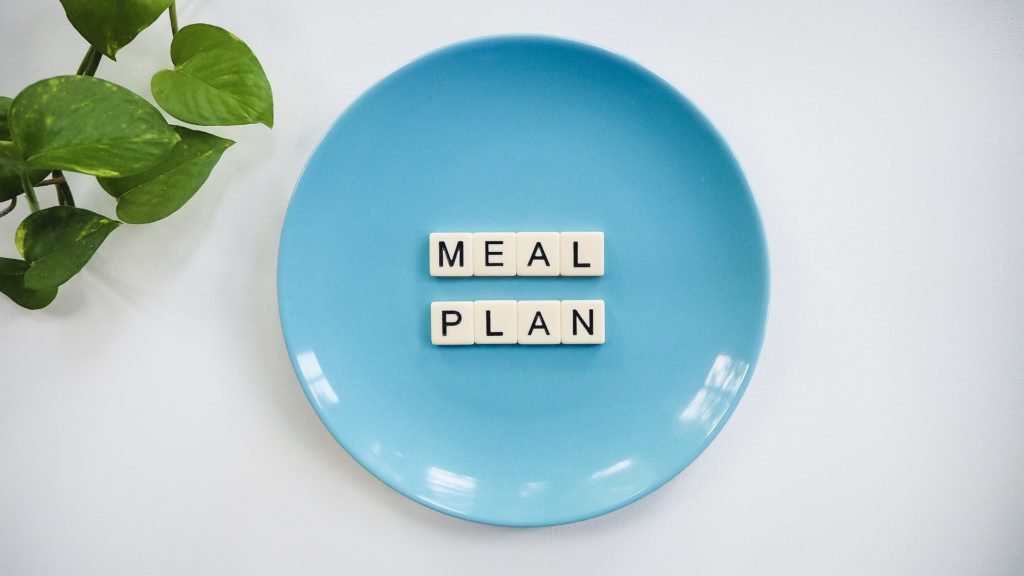
The solution:
- Picking the right food. As we already know, keto foods and ingredients are low in carbs and high in fat. The keto diet usually recommends keeping your daily total carb intake below 35 grams, although it can vary from person to person. Having such a low amount of carbs to go off of, you must be very careful with your food choices. This is where a meal plan comes in and makes the process easy to follow and be consistent with.
- The right foods to pick. When it comes to choosing the right foods to eat on the keto diet and making your own meal plan, always think low carb. A good list to go by is non-starchy vegetables, high-fat dairy, nuts and seeds, meats and fish, and healthy fats. The types of foods to avoid are starchy vegetables, most fruits, and grains like wheat and rice.
- An example meal plan.
- Breakfast: A bell pepper stuffed with eggs and cheese.
- Lunch: Tuna salad mix with tomatoes and celery on top of romaine lettuce.
- Dinner: Grilled salmon with lemon and sauteed spinach in coconut oil.
- Snacks(optional): Keto bars, non-starchy vegetables, keto-friendly fruit.
6. How Intermittent Fasting Will Boost Weight Loss Results
The problem:

Intermittent fasting isn’t something most people know about, and it isn’t a requirement in the keto diet, but it should be considering its powerful benefits. When you incorporate intermittent fasting, it helps your body create ketones even quicker and more efficiently than without.
Intermittent fasting is where you eat all of your calories in a shortened amount of time, usually 6-8 hours, and fast the rest of the time. Here are a couple of reasons why intermittent fasting can be the solution to boosting weight loss results during the keto diet.
The solution:
- Limits our calorie intake. The main point of intermittent fasting is to increase the amount of food we can eat at one time of the day. People typically restrict themselves until 5 pm -11 pm, which means 18 hours of fasting. Our bodies are designed to only take in a certain amount of food at a time, so you’re going to restrict your calories that way naturally. This is an excellent fix for people who tend to overeat and mindlessly snack throughout the day.
- Our bodies breakdown stored fat. Our bodies will eventually, over time, start to adjust to fasting, and we won’t be as hungry as we used to be. This allows for our bodies to start breaking down extra fat stored as energy because we aren’t eating as much in general or throughout the day. When our bodies are in ketosis, we have little to no glucose in our bloodstream, so we instead use the fat storages in our body as energy. This is perfect for people looking to lose more weight and fat consistently and more effectively.
7. How Physical Activity Will Benefit Weight Loss During Keto
The problem:
Physical activity during the keto diet is of utmost importance if your goal is to lose weight at a consistent rate. Many people may think that while being a low carb diet, it is harder to exercise or it is unneeded.
In reality, physical exercise is vital to incorporate into your lifestyle when trying to lose weight on the keto diet. Instead of seeing physical activity as more difficult or unneeded since you are dieting, see it as a booster for weight loss along with the keto diet with these solutions:

The solution:
- Burns more fat as an energy source. When you exercise while on the keto diet, studies show that when your carb intake is decreased, your glycogen stores remain low. This forces your body to produce more ketones, and your muscles use that for fuel instead. This promotes using your fat stores as an energy source instead of using carbohydrates, which you would be consuming daily when not on the keto diet.
- Promotes muscle gain and metabolic adaptions. Physical activity not only burns calories but helps in building muscle, which gives your metabolism a boost. When training on the keto diet, you will increase your training performance in the long run, which means more calories being burned for longer.
- Will make your exercise routine more consistent. Of course, starting an exercise routine can be difficult, especially when actively starting a diet along with it, but keto makes it easier. As we said above, the longer we exercise on the keto diet when our body is in ketosis, the easier it gets. So creating a workout schedule while staying true to your diet, will make the whole process more manageable as time goes on. The more areas in your life, like nutrition and fitness that you are strict and ambitious with, the more weight loss benefits you will see.
The Conclusion
When it comes to the keto diet and weight loss, there are a lot of options to work on to produce results. It’s all in the determination and mindset to push through the harder moments and make good decisions along the way.
So that’s our ultimate guide to productivity.
Now I want to turn it over to you: What did you think about this guide? Or maybe there’s something I missed.
Let us know by leaving a comment below!

